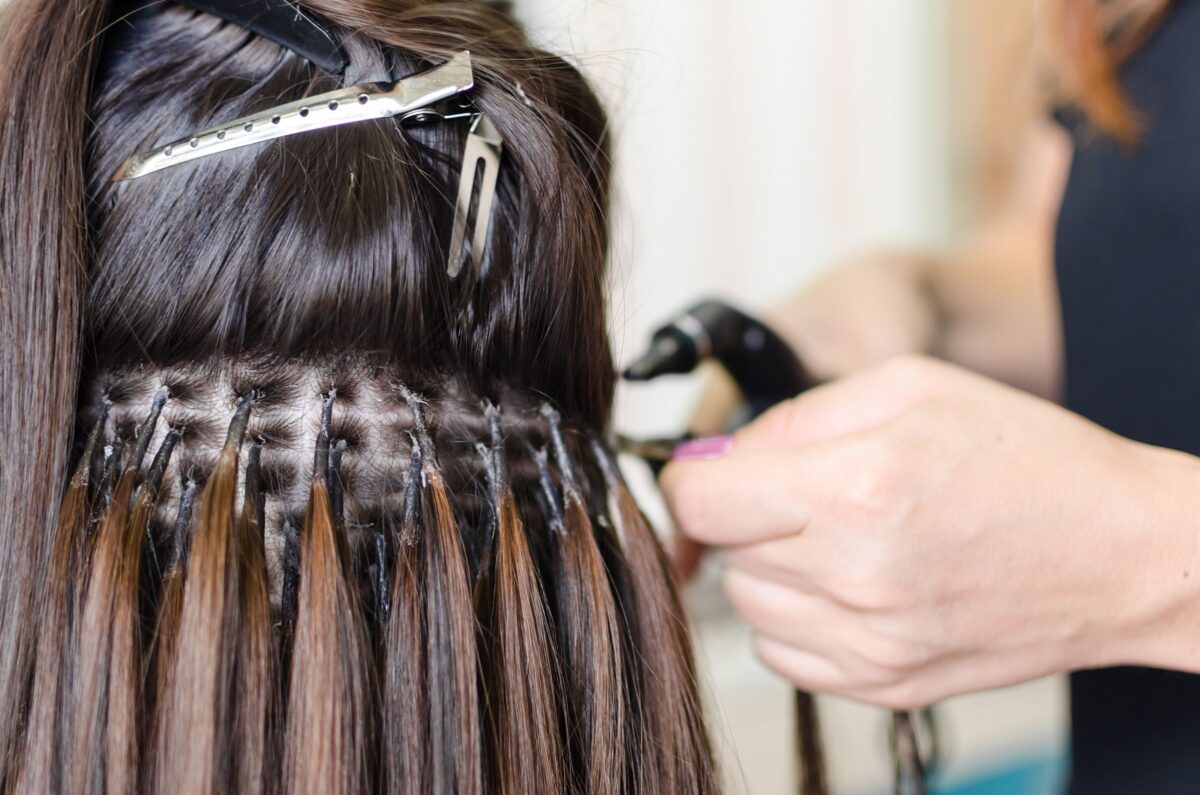Hair extensions work by adding length, volume, or both to one’s natural hair through various attachment methods including clipping, sewing, gluing, or taping. These methods allow the extensions to blend with natural hair, creating a seamless look that can be temporary or semi-permanent. The choice of method depends on personal preference, hair type, lifestyle, and budget. Properly applied and maintained extensions can offer a versatile way to change up your look without permanent alterations to your natural hair.
Understanding Different Types of Hair Extensions
1. Clip-In Extensions: These are temporary extensions with clips that can be easily attached and removed at home. Ideal for occasional use, they cause minimal damage to natural hair.
2. Tape-In Extensions: Semi-permanent extensions that are adhered to small sections of natural hair using double-sided tape. They require professional application and can last 4 to 8 weeks before needing repositioning.
3. Sew-In/Weave Extensions: Hair is braided tightly to create a base for the extensions, which are then sewn in with a needle and thread. Best suited for thick, coarse hair, this method can last up to 8 weeks.
4. Fusion/Bonded Extensions: Individual keratin-tipped strands are bonded to natural hair using heat. This method offers a more permanent solution but requires professional application and maintenance.
5. Micro-Link Extensions: Small sections of natural hair and extensions are clamped together using tiny silicone-lined beads. This method allows for adjustment and reuse of extensions and is less damaging to natural hair.
Choosing the Right Hair Extensions
1. Match Your Hair Type: Select extensions that match the texture of your natural hair for a seamless blend.
2. Consider Your Lifestyle: If you lead an active lifestyle or frequently style your hair, choose extensions that can withstand regular washing, heat styling, and physical activity.
3. Budget Considerations: The cost of extensions varies widely based on the type, quality of hair (synthetic vs. human), and application method. Weigh the initial investment against maintenance costs and longevity.
Application and Maintenance
1. Professional vs. DIY: While clip-in extensions can be easily applied at home, other types such as tape-ins, sew-ins, fusion, and micro-links should be applied by a professional to ensure they are attached safely and effectively.
2. Care and Maintenance: To extend the life of your extensions, follow a proper care routine that includes gentle washing with sulfate-free products, regular conditioning, and minimal heat styling. Use a soft-bristle brush to prevent tugging and avoid sleeping with wet extensions to prevent matting.
3. Regular Adjustments: Semi-permanent extensions require regular adjustments as your natural hair grows. Schedule appointments with your stylist every 6-8 weeks to reapply or tighten the extensions as needed.
Conclusion
Hair extensions offer a dynamic solution for anyone looking to enhance their natural hair by adding length, volume, or both. By understanding the different types of extensions and how they work, you can make an informed decision that suits your hair type, lifestyle, and budget. Whether you opt for a temporary clip-in option for special occasions or a more permanent solution like fusion extensions, proper selection, application, and maintenance are key to achieving a natural, beautiful look.
